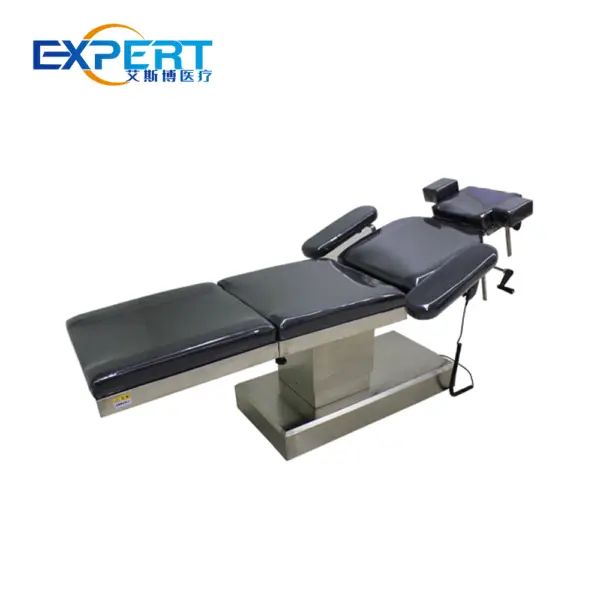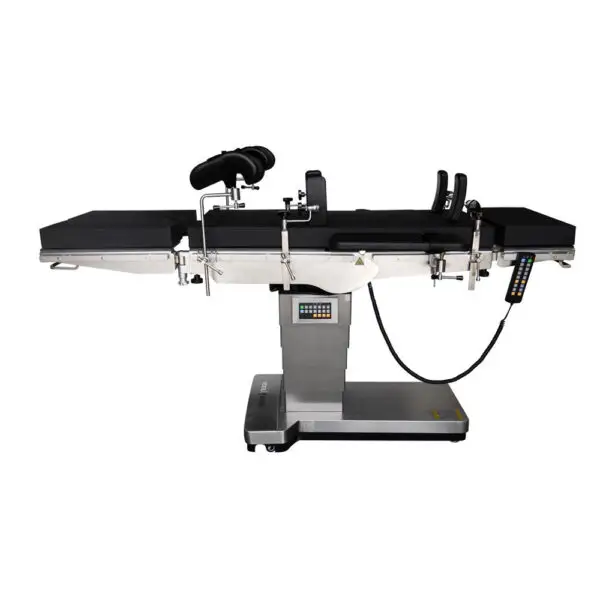Die Anschrift
304 Nordkardinal St.
Dorchester Center, MA 02124
Arbeitsstunden
Montag bis Freitag: 7:00 - 19:00
Wochenende: 10:00 - 17:00
Willkommen auf meinem Blog!
Bevor wir in den Inhalt eintauchen, wenn Sie an unseren Produkten interessiert sind oder Fragen haben, besuchen Sie bitte unsere Kontaktiere uns Seite auf der Website. Unser Team steht Ihnen bei Anfragen, Bestellungen oder sonstiger Unterstützung gerne zur Verfügung.
Lassen Sie uns nun gemeinsam unsere Reise beginnen. Ich hoffe, Sie finden die Inhalte hier aufschlussreich, spannend und wertvoll.

Operationstische sind seit langem ein grundlegender Bestandteil chirurgischer Eingriffe und bieten Patienten während der Operation eine stabile und anpassbare Plattform. Fortschritte in der Medizintechnik haben in den letzten Jahren Design und Funktionalität von Operationstischen revolutioniert und so die Operationsergebnisse und die Patientensicherheit verbessert. Dieser Blogbeitrag befasst sich mit der sich entwickelnden Rolle von Operationstischen in der modernen Chirurgie und beleuchtet ihre wichtigsten Funktionen, Vorteile und Zukunftsaussichten.
Operating tables have undergone significant evolution since their inception in ancient times. From rudimentary wooden platforms to sophisticated, electronically controlled systems, the design and functionality of operating room tables have evolved to meet the demands of contemporary surgical practices. Modern operating room tables boast various features such as adjustable height, tilt, and lateral tilt capabilities, allowing surgeons to optimize patient positioning for different procedures.
Operating tables play a crucial role in ensuring the success of surgical interventions by providing a stable and ergonomic platform for both patients and medical personnel. Some key features and advantages of modern operating room tables include:
To illustrate the practical significance of operating tables in modern surgery, let’s explore some real-world case studies:

| Besonderheit | Basic Operating Table | Advanced Operating Table |
|---|---|---|
| Höhenverstellung | Begrenzt | Umfangreich |
| Neigungsfunktion | Basic | Multi-Axis |
| Bildkompatibilität | Keiner | MRI/CT Integration |
| Sicherheitsvorrichtungen | Standard Side Rails | Pressure-Relieving Mattress, Straps |
| Specialty Attachments | N/A | Orthopedic Traction, Cardiovascular Positioners |
Operationstische represent a cornerstone of modern surgical practice, providing essential support and functionality for a diverse range of procedures. As technology continues to advance, operating room tables will likely evolve further, incorporating innovative features to enhance surgical outcomes and patient care. By understanding the role and capabilities of operating room tables, healthcare professionals can optimize their use in various surgical settings, ultimately benefiting both patients and surgical teams.
F: Sind Operationstische compatible with all surgical procedures?
A: While operating tables are versatile and adaptable, some specialized procedures may require specific table configurations or attachments for optimal positioning and support.
Q: How often are Operationstische replaced or upgraded in healthcare facilities?
A: The frequency of operating table replacement or upgrade varies depending on factors such as technological advancements, budgetary considerations, and equipment maintenance. In general, healthcare facilities aim to ensure that their operating room tables remain up-to-date with current standards and capabilities.
